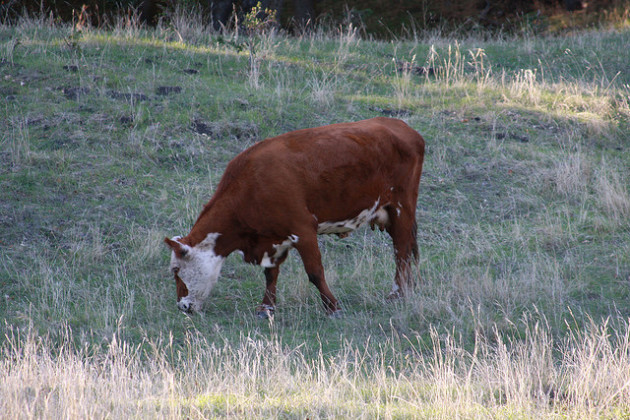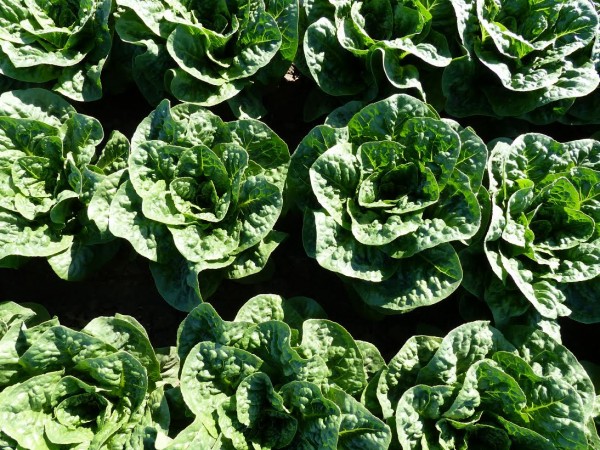In 2006, an E. coli O157:H7 outbreak in bagged spinach sickened hundreds and killed at least three people across the United States. For decades, foodborne diseases had been primarily associated with meat. In the 1970s, <1% of the foodborne disease outbreaks could be attributed to produce. The most recent estimates, however, suggest that fresh produce is now the leading cause of foodborne illness in the United States, responsible for 38% of hospitalizations and 23% of deaths.
After the 2006 outbreak, spinach sales plummeted and the salad greens industry lost US$350 million. The public called for reform of food safety regulations. And, in 2011, the federal government passed the Food Safety Modernization Act (FSMA) — the most sweeping overhaul to food safety regulation of the past 70 years. Since then, the FDA has been engaged in rule-making, culminating this week as the “produce rule” closes for public comment and solidifies new standards for fresh produce; standards that will alter the way fruits and vegetables are grown, affecting farms and nature throughout the United States and beyond.
Food Safety and Conservation
Why are we writing about food safety in a conservation blog? The connection is circuitous, but important, and it is, as these connections often are, a story of hasty decisions and unintended consequences. It begins after the 2006 outbreak when epidemiologists traced the disease-causing E. coli O157:H7 strain to a farm in the Central Coast of California, the region responsible for growing ~70% of U.S. salad greens.

The strain was found in water, soil, cattle, and the feral pigs that frequent natural areas around Central Coast farms. Though wildlife very rarely carries E. coli O57:H7—the disease is much more common in cattle—wildlife have been loosely associated with several foodborne diseases outbreaks in the past. Wildlife, and by extension their habitat, could thus be considered a food safety threat.
Fearing litigation, lost sales, and sick customers, large produce buyers quickly created their own farming standards and enforced them by sending auditors to farm fields. Suddenly, farmers could lose the sale of entire fields of product if they failed to comply with these new buyer-mandated standards. In response to the new requirements, farming practices changed rapidly in the Central Coast and nature became an early and frequent victim.
A Blow to Nature
In one survey of Central Coast farmers, 47% reported being told by their buyers that wildlife was a big threat to food safety. In another survey, 89% of farmers reported trying to exclude wildlife from their farms to improve food safety by erecting fences, lining their fields with rodent traps and poison bait, and clearing adjacent natural vegetation. Some farmers reported pouring copper sulfate into waterways to kill fish and amphibians because they may carry Salmonella. These practices took a heavy toll – and all were being implemented without any scientific evidence to show that they would actually improve food safety.
As one measure of the drastic changes, Conservancy scientists published a paper in Frontiers in Ecology and the Environment last year that reported that 13% of the remaining riparian habitat along the highly diverse Salinas River was degraded or destroyed following the 2006 E. coli outbreak. Given that 90% of the riparian and floodplain habitat had been lost already to conversion to farm fields, every acre counts for wildlife. This loss was a huge blow for nature – and for everyone who lives in the Salinas Valley.
Unfortunately, there was no scientific evidence that habitat removal would actually make food any safer. Moreover, nowhere had it been shown that removing habitat reduced wildlife intrusion onto farm fields, let alone intrusion of proven disease vectors.
As FSMA extends food safety regulations across 4.5 million acres of U.S. farmland, we must ask ourselves: is there really a tradeoff between conserving nature and producing safe food? After compiling hundreds of thousands of pathogen tests in leafy green vegetables, water sources, and wild animals across California’s Central Coast, our initial findings suggest not.
No Evidence that Wildlife Causes an Increase in Pathogens
Working with industry and disease ecologists, our data have yet to yield any evidence that nature can cause an increase in pathogen prevalence. Pathogens do not increase in prevalence near riparian or other types of natural habitat. On the contrary, we have found that nature on and near farms may benefit farmers, local communities, and consumers. Though our work is ongoing, early findings from field experiments and modeling suggest that natural habitat can improve water quality and potentially increase farm yields by providing a home for the predators of damaging crop pests.

An outpouring of public comments and advocacy by the Conservancy and its partners caused the FDA to re-write parts of its FMSA produce rule, including sections related to wildlife. The rule now explicitly states that it neither requires nor authorizes farmers to “exclude animals from outdoor growing areas,” “clear farm borders,” or “destroy animal habitat.”
While an encouraging step, the rule is no guarantee. Following the 2006 outbreak in California, state government officials, producers, and food retailers joined together to create the California Leafy Greens Marketing Agreement (LGMA); in essence, a set of industry-determined best practices for growing safe food. LGMA is voluntary, but once farmers sign on, it is legally enforceable. Now, 99% of California leafy greens are LGMA-certified. Like FSMA, LGMA states that any leafy greens that come in contact with wildlife feces must be destroyed, but it does not encourage habitat removal.
Instead, the origins of the habitat removal, wildlife fencing, and poison traps are much more likely to be found in the private documents created by produce buyers and enforced by auditors. Farmers have borne the cost. One farmer was forced to destroy 10 acres of produce when deer wandered into his farm field. Another farmer paid US$100,000 to fence off his produce farm from wildlife.
Mitigating the growing threat of foodborne disease outbreaks in fresh produce is a moral imperative. Many are getting sick. Some have died. However, with no evidence of its efficacy in reducing pathogens and strong evidence of its social and environmental costs, we suggest that the view of nature as an enemy to food safety is misguided and destructive. We can grow safe food and conserve nature. And our work is showing that the public interest would be far better served by targeting the real enemy with a science-based “war against foodborne disease,” rather than nature.
Daniel Karp, “NatureNet” Postdoctoral Science Fellow, The Nature Conservancy and University of California Berkeley
Sasha Gennet, Senior Scientist, The Nature Conservancy of California
Rodd Kelsey, Lead Scientist, Working Landscapes, The Nature Conservancy of California
Opinions expressed on Cool Green Science and in any corresponding comments are the personal opinions of the original authors and do not necessarily reflect the views of The Nature Conservancy.




I feel that the general public is being too protected from normally occurring pathagens in our environment. And thus our immune systems are not being challenged to protect us from these diseases. The old adage “one needs to eat a Peck of dirt in ones life”
We ought to protect the Nature regardless of the impact it will have on our activities.Nice farm
Balance. In his book ‘The Fox and The Hound’ Daniel P. Mannix shares the delicate balance of relationship between man and nature. That in the symbiotic fragile relationship of man [Steward of the land], hound and fox; “Neither had an enemy as dangerous as man [progress]”.